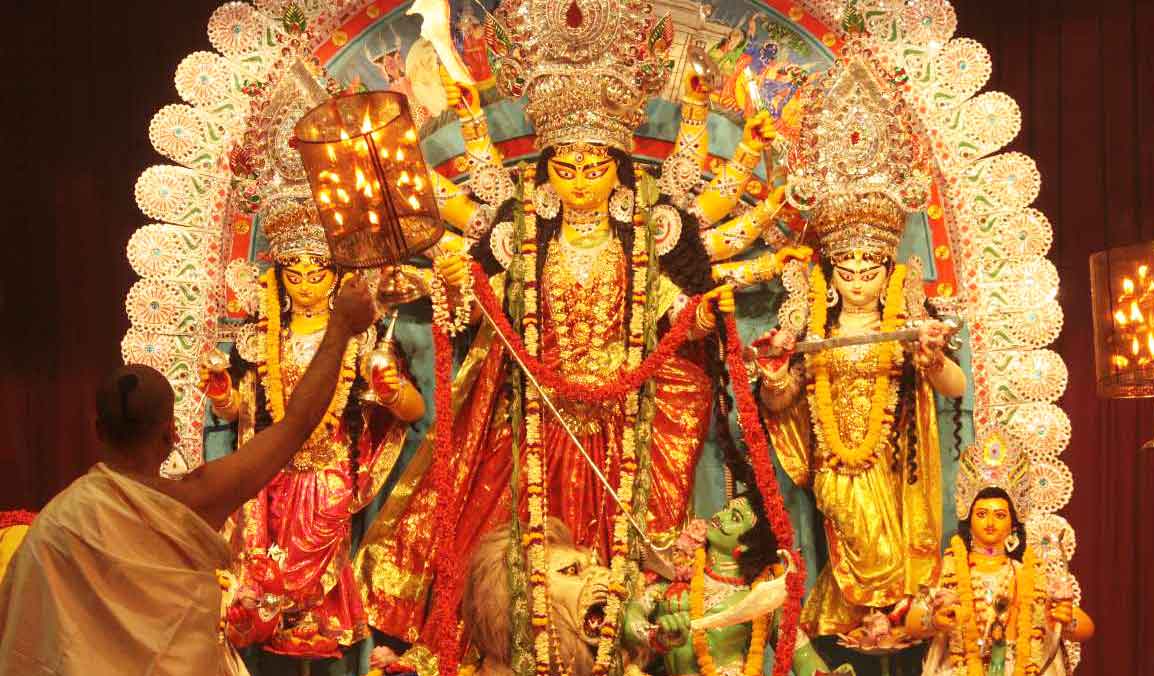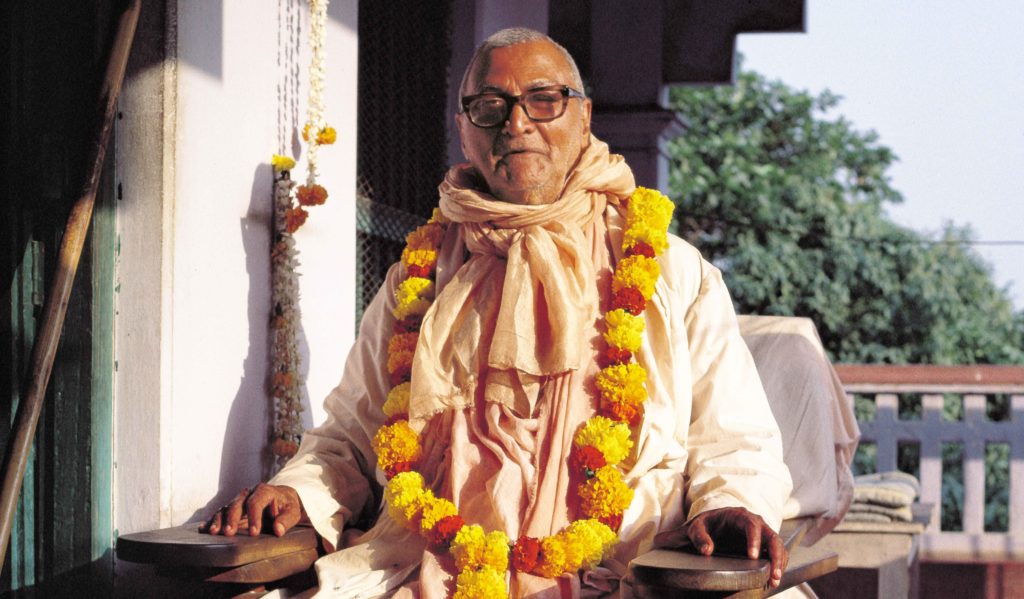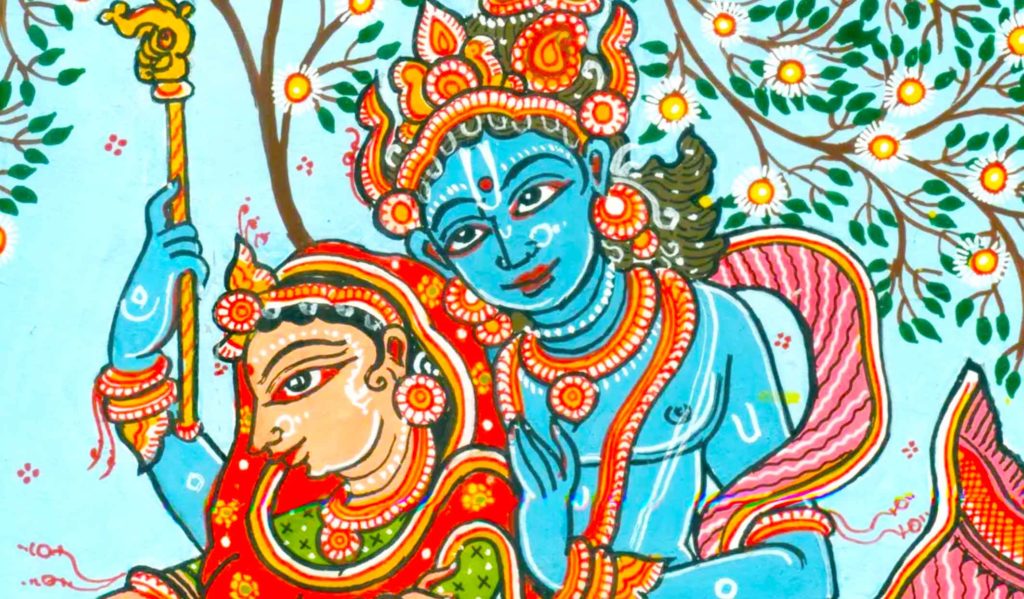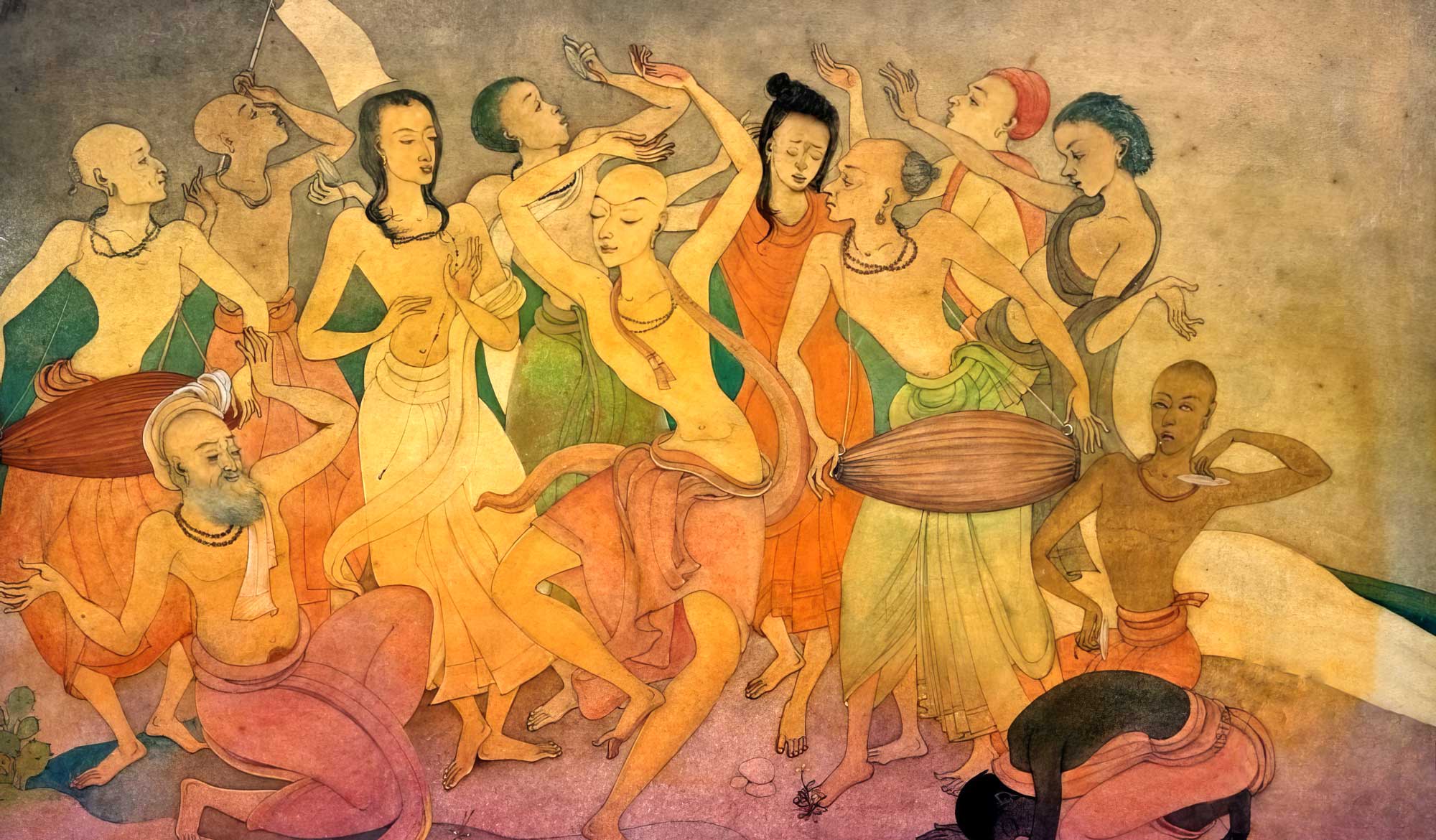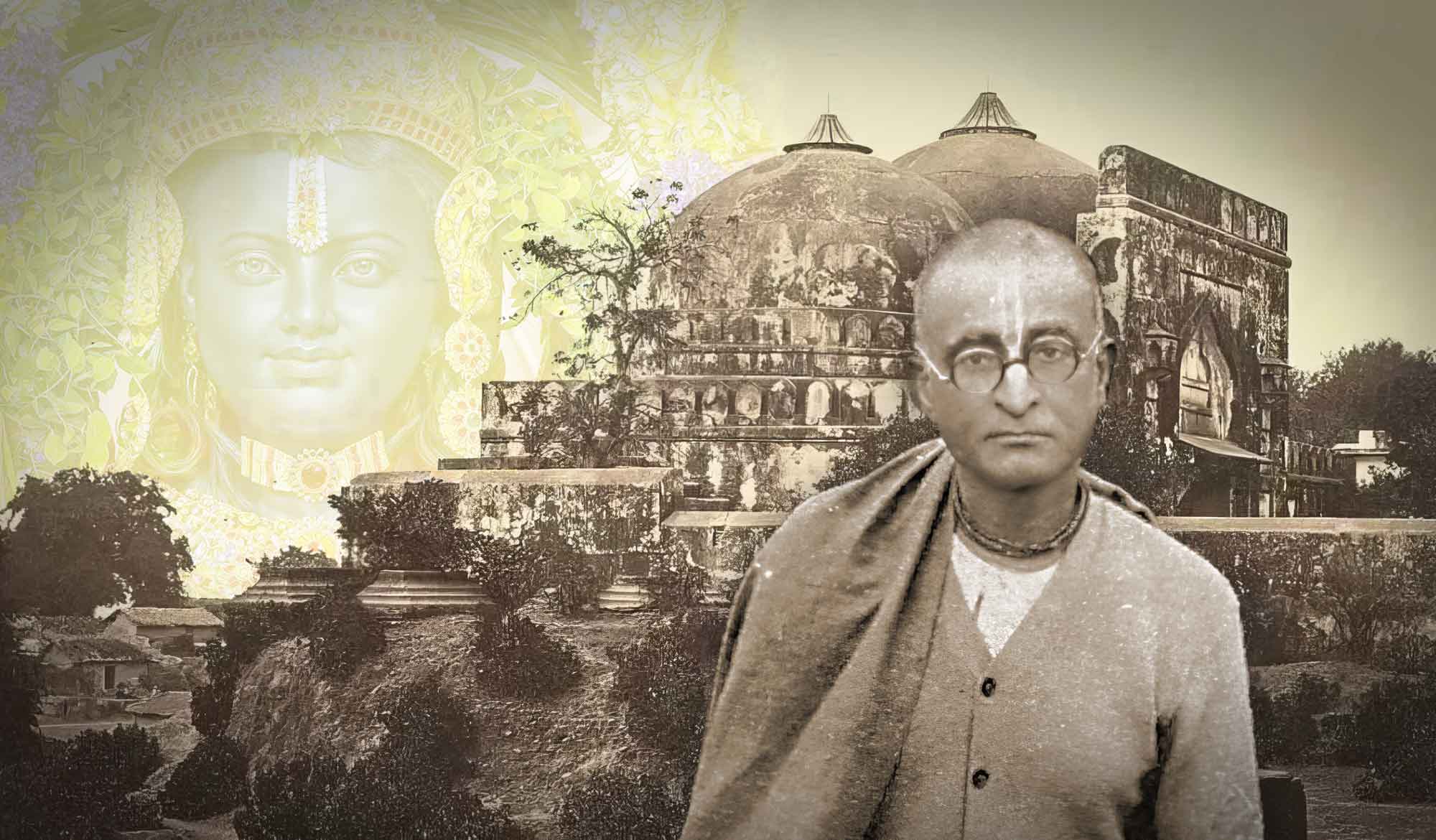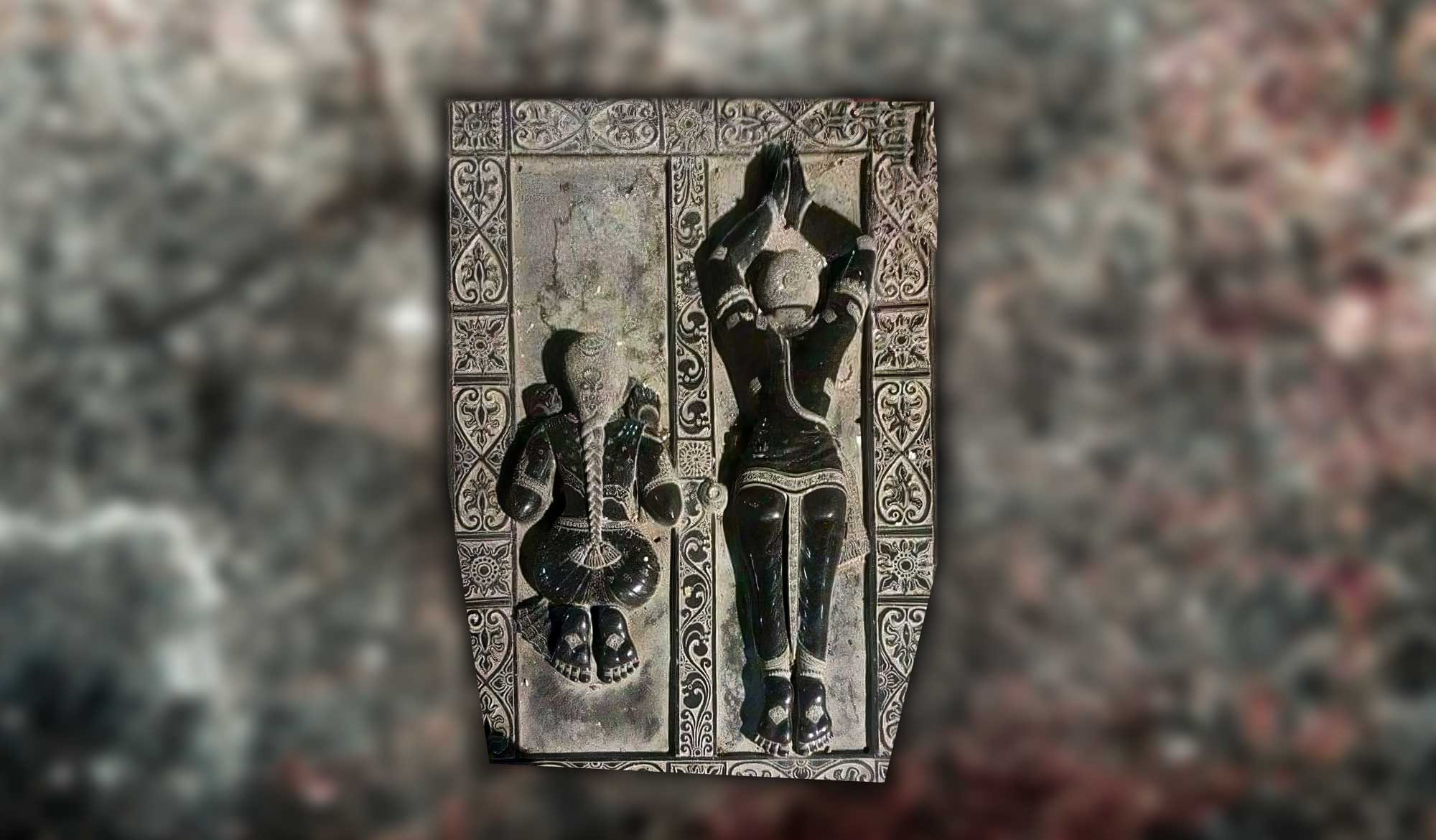Overview
"Śrī Śarādīyā Pūjā" by Śrīla Śrīdhara Deva Gosvāmī Mahārāja was first published in Bengali in Śrī Gauḍīya Darśana, Volume 1, Issue 3 on October 17th 1955. Śrīla Śrīdhara Mahārāja explains the origins of Śarādīyā Pūjā and how the Vaiṣṇavas are pure Śaktas. This article was translated from Bengali by Swami B.V. Giri and Sanātana Dāsa.
On the occasion of the annual festival of the worship of Goddess Durgā, Hindu India has started feeling the pulse of a new national awakening. Grand arrangements for this festival are particularly seen in Bengal. In other states also this festival is observed in a different manner like Caṇḍikā-navarātrī etc. In order to attain victory over the ten-headed Rāvaṇa, Śrī Rāmacandra awoke the goddess for worship and pleased her during the period when the demigods are generally asleep. This Śarādīyā Pūjā has such a historical connection.
Although we do not find this episode in the original Vālmīki Rāmāyaṇa, it has been established on the basis of evidence found in the upa-purāṇas. This celebration has become famous as the Śarādīyā festival. However, originally this pūjā occurred during Vasanta (springtime) and was the worship of Vasanti Devī.
Thus, desirous of annihilating their powerful Rāvaṇa-like enemies, patriotic Indians enthusiastically feel a fundamental urge towards this act of worship. During this time, the land of the Āryans known as Brahma-varta, which is glorified by sages like Manu etc. celebrates Śrī Rāmacandra’s victory over Lanka with great pomp and ceremony.
Generally, the Sakta community is naturally the most enthusiastic and takes great pleasure in this festival. But the majority of them are extremely dedicated to the kevalādvaita-brahmavāda doctrine of Śrī Śaṅkarācārya. Thus, Māyā or Śakti, according to their point of view, is accepted as non-eternal; therefore when we analyse this a little deeper, any endeavour to worship her becomes pointless.
Despite the vulgar misconceptions of the Smārtas and Śaktas, it is actually those whom they consider being averse to the worship of Śakti – namely the Vaiṣṇavas – who actually have faith in the eternal position of Śakti under the guidance of the Energetic, and it is they that show respect for her eternal worship. The Vaiṣṇavas feel honoured to call themselves śuddha Śaktas (pure Śaktas) and they are fully aware that surrender to the service of the highest manifestation of the svarūpa-śakti of the Supreme Energetic is the fundamental basis of bhajana.
Some worldly-minded research scholars have taken pleasure in proclaiming that Śrī Caitanyadeva, the founder of Gauḍīya Vaiṣṇavism, was a covert Tāntrika.
Those who externally proclaim themselves to be Śaktas, display grand arrangements and enthusiasm for the worship of Śakti, but ultimately they desire to merge themselves into the unknowable Brahman who is without any potency; they deny the eternality of Śakti and only accept the non-differentiated Brahman. However, they advertise themselves as Śaktas amongst the society of common people who are incapable, inexperienced or disinclined to analyse such subtle topics. Will not those possessing sharp intelligence consider this to be a mockery of fate of this world?
In such a situation, the Bhāgavatas that follow Śrī Gauḍīya darśana are always interested and inclined to help the people of this world to reach a the proper understanding of the śāstra.
Related Articles
- Śrī Śrī Rādhā Kṛṣṇa & The Fountainhead of All Tattvas by Śrīla Bhakti Pramoda Purī Gosvāmī
- A Prayer Composed on the Occasion of the Disappearance of Śrīla Gadādhara Paṇḍita by Śrīla Bhakti Pramoda Purī Gosvāmī
- The Appearance of Śrīla Gadādhara Paṇḍita by Śrīla Bhakti Rakṣaka Śrīdhara Deva Gosvāmī
- Śrī Śarādīyā Pūjā by Śrīla Bhakti Rakṣaka Śrīdhara Deva Gosvāmī
- Śrī Lalitā Devī and Śrīmatī Rādhārāṇī by Śrīla Bhakti Rakṣaka Śrīdhara Deva Gosvāmī
- The Appearance of Rādhā-kuṇḍa by Śrīla Bhakti Rakṣaka Śrīdhara Deva Gosvāmī
- From Śraddhā to Prema by Śrīla Bhakti Gaurava Narasiṅgha Mahārāja
- Gāyatrī as Rādhārāṇī by Śrīla Bhakti Gaurava Narasiṅgha Mahārāja
- My Guru is Rādhārāṇī by Śrīla Bhakti Gaurava Narasiṅgha Mahārāja
- The Greatest Negative by Śrīla Bhakti Gaurava Narasiṅgha Mahārāja
- Śrī Rādhāṣṭamī by Śrīla Bhakti Gaurava Narasiṅgha Mahārāja
- Śrīla Śrīdhara Mahārāja and the Gem of All Conceptions by Śrīla Bhakti Gaurava Narasiṅgha Mahārāja
- Planets of Faith by Śrīla Bhakti Gaurava Narasiṅgha Mahārāja
- Rādhā-Pāda Darśana by Śrīla Bhakti Gaurava Narasiṅgha Mahārāja
- The Definition of Faith by Gaura Gopāla Dāsa
Further Reading
Pilgrimage with Swami Narasiṅgha – Part 7: Keśī Ghāṭa
Continuing with our pilgrimage series, this week Śrīla Narasiṅgha Mahārāja takes us to Keśī Ghāṭā where he tells us about Madhumaṅgala’s meeting with the Keśī demon, what Keśī represents, and how Śrīla Prabhupāda almost acquired Keśī Ghāṭa. Mahārāja also narrates his own experience. This article has been adapted from a number of talks and articles by Narasiṅgha Mahārāja.
Prema Dhāma Deva Stotram with the Narasiṅgha Sevaka Commentary – Verses 61-65
In verses 61 to 65 of 'Prema Dhāma Deva Stotram', Śrīla Śrīdhara Mahārāja narrates the pastime of Śrī Caitanya at Caṭaka Parvata In Purī and explains how the scriptures produced by Brahmā and Śiva are ultimately searching for the personality of Mahāprabhu who is merciful too all jīvas, no matter what their social position.
Prabhupāda Śrīla Sarasvatī Ṭhākura’s Visit to Ayodhyā
With the forthcoming observance of Śrī Rāma Navamī, we present 'Prabhupāda Śrīla Sarasvatī Ṭhākura’s Visit to Ayodhyā' written by Śrīla Bhaktisiddhānta Sarasvatī Ṭhākura Prabhupāda from The Gaudīyā magazine, Vol 3. Issue 21/ In December 1924, after visiting Benares and Prāyāga, Sarasvatī Ṭhākura visited the birth-site of Śrī Rāmācandra in Ayodhyā.
Śaraṇāgati – The Only Path to Auspiciousness
In this article, 'Śaraṇāgati - The Only Path to Auspiciousness', Dhīra Lalitā Dāsī analyses the process of śaraṇāgati (surrender) beginning with śraddhā (faith). She also discusses the role of śāstra and the Vaiṣṇava in connection with surrender.
Pilgrimage with Swami Narasiṅgha – Part 7: Keśī Ghāṭa
Continuing with our pilgrimage series, this week Śrīla Narasiṅgha Mahārāja takes us to Keśī Ghāṭā where he tells us about Madhumaṅgala’s meeting with the Keśī demon, what Keśī represents, and how Śrīla Prabhupāda almost acquired Keśī Ghāṭa. Mahārāja also narrates his own experience. This article has been adapted from a number of talks and articles by Narasiṅgha Mahārāja.
Prema Dhāma Deva Stotram with the Narasiṅgha Sevaka Commentary – Verses 61-65
In verses 61 to 65 of 'Prema Dhāma Deva Stotram', Śrīla Śrīdhara Mahārāja narrates the pastime of Śrī Caitanya at Caṭaka Parvata In Purī and explains how the scriptures produced by Brahmā and Śiva are ultimately searching for the personality of Mahāprabhu who is merciful too all jīvas, no matter what their social position.
Prabhupāda Śrīla Sarasvatī Ṭhākura’s Visit to Ayodhyā
With the forthcoming observance of Śrī Rāma Navamī, we present 'Prabhupāda Śrīla Sarasvatī Ṭhākura’s Visit to Ayodhyā' written by Śrīla Bhaktisiddhānta Sarasvatī Ṭhākura Prabhupāda from The Gaudīyā magazine, Vol 3. Issue 21/ In December 1924, after visiting Benares and Prāyāga, Sarasvatī Ṭhākura visited the birth-site of Śrī Rāmācandra in Ayodhyā.
Śaraṇāgati – The Only Path to Auspiciousness
In this article, 'Śaraṇāgati - The Only Path to Auspiciousness', Dhīra Lalitā Dāsī analyses the process of śaraṇāgati (surrender) beginning with śraddhā (faith). She also discusses the role of śāstra and the Vaiṣṇava in connection with surrender.


